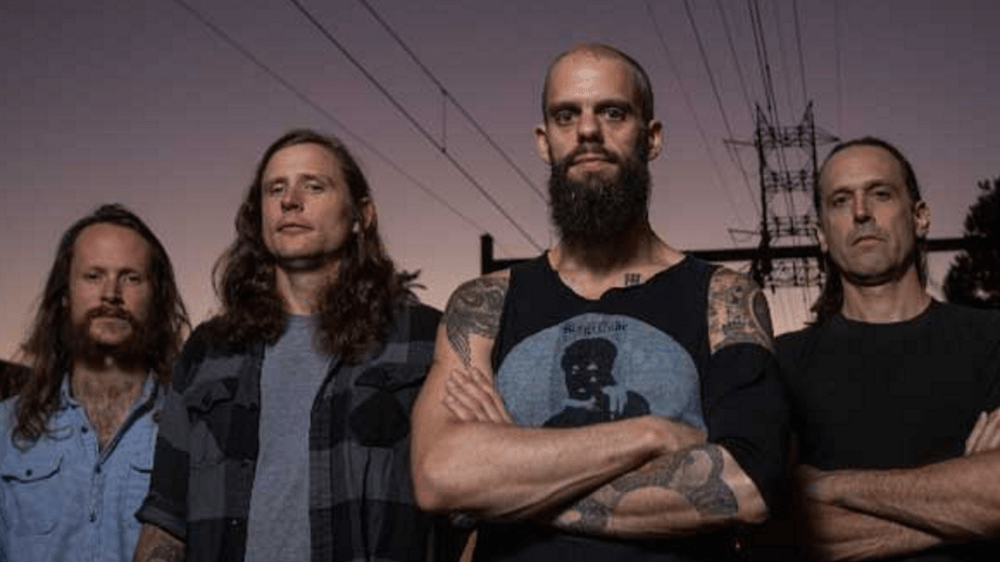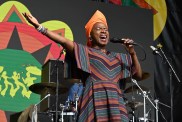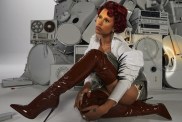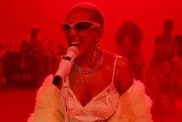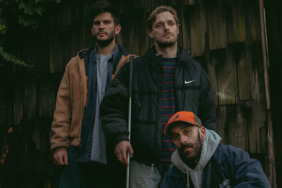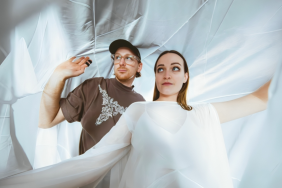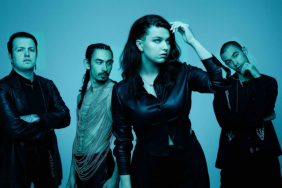A sprinkling of the sweet leaf of stoner rock. A mystic voyage into prog. A down-tuned detour into alt-metal. There’s no telling where Baroness will take you next, and therein lies the excitement that comes with consuming their music. Since their formation in 2003, Baroness have built themselves up as a hard-working, all-encompassing metal band; scoring adulation from the likes of Metallica and performing on some of the biggest festival stages in the world. It hasn’t entirely been smooth sailing, however – the last few years for the band have not been particularly kind.
A near-fatal bus crash sidelined the band mere months after the release of their 2012 double album, Yellow and Green. When the band finally did emerge a year later, their rhythm section parted ways shortly after. It would be enough to keep a lesser band down, but Baroness stand as tall and as proudly as they ever have before.
Ahead of the release of their fourth album, Purple, Music Feeds spoke with lead vocalist, guitarist, songwriter, artist and founding member John Baizley. In a candid but detailed discussion, we spoke about relaunching the band, the world of colour and why they’re really putting out an album in December…
Music Feeds: Another new Baroness album, another new part of the colour spectrum used for its title. Often, colours are linked with emotions – and, in the case of synesthesia, sounds. What does Purple evoke for you? When people tend to link purple with music, it tends to be Prince-related; which one can safely assume isn’t the case here…
John Baizely: [laughs] Sadly, I just don’t have his dance moves! At this point for us, there are very little colours left to name our albums after. For us, the colour thing… in some ways, it’s a type of chronology. One, two, three, four; A, B, C, D… in our case, it just happens to be colours. It definitely helps that there’s a visual artist in the band. Every colour has a symbolic meaning – it changes from culture to culture and over time. We take all of that into account.
Besides just the colour – which I could talk about for another hour – there’s also the side to it that’s meant to be simple. It’s a moment of simplicity, just having a record named after a colour. It can bring people in that wouldn’t normally listen to this kind of music. Of course, there’s a lot of themes and dark ideas to unpack once you’re actually listening. The fact that they’re listening in the first place, however, means there was at least a moment where it became a little more accessible.
MF: You worked with Dave Friddman on this record, who is perhaps best known for creating a very distinctive psychedelic aesthetic in the music that he’s worked on – most notably The Flaming Lips, Mogwai and Mercury Rev.
JB: Don’t forget Tame Impala, too! Your guys!
MF: That’s right. It would – at least, on paper – seem to be a style of production that’s at loggerheads with the kind of music you make. How did the contrast between the two camps work out during the making of Purple?
.
JB: We’ve always liked going against the grain of what people expect of us. We’ve always worked with producers who have very little experience of working with heavy bands. I’m not trying to be entirely contrarian here, but there’s always been an interest in psychedelic music within this band. Not only that, but I see what Dave does as a producer less as an overtly psych-only sort of thing and more as a creative thing. They can go hand in hand frequently, but we required creativity and we required open-mindedness.
We needed someone who would not fall back on the kind of production tropes that heavy bands always tend to use. It gives us an opportunity to work from a completely different standpoint. Dave doesn’t come from a metal background – neither did John Congleton, who worked on Blue, Yellow and Green with us. It ensures us that we’re going to be doing something fresh and something outside of the square.
MF: At this point, Baroness are just as well known for their artwork – which you do yourself – as they are for their music. How does that side of things develop? When you’re making an album, do you have just as much of an idea of what it will look like as it will sound like?
JB: In a way, it’s a little arbitrary. We need to have the music and lyrics first in order to start developing visuals. At the end of the day, one of the things that Baroness does is tell stories. We don’t do it in a very direct way – we do it in a very round-about, obscure way. In order to add different layers of meaning and importance to our story and to our subject matter, we have chosen to use a very singular and direct aesthetic. Part of this is because this band is meant to be a creative outlet.
Anything we want to do, we can figure out how to do within the context of Baroness. Because I make art and it’s always been an interest of mine, it’s always been obvious to develop the visual aesthetic. The corollary effect of that is getting to do something that’s also important to us – de-emphasising the characters of the band members themselves.
What I tend to think happens in the music industry a lot is that people start to canonise and focus on the personality of the artists. That’s not necessarily a bad thing, and I’m not disagreeing with it. With Baroness, though, we would really prefer that the music speak for itself. In order to do that, we’ve created this visual side that sets up this universe away from the four of us. It stands outside of us. The music we make is more than the sum of its parts, so it’s important to have a visual side that pays attention to that.
MF: Purple is also the first Baroness album since your line-up changed a few years ago – bassist Nick Jost and drummer Sebastian Thomson have both been in the band since April of 2013. How has the dynamic changed in terms of making new music – if at all?
JB: The thing is, when 50% of the band changes and your music is generally a four-way colllaboration, change is inevitable. That doesn’t necessarily need to be the sound of your band. It can be your attitude, your humour, your intelligence… anything can change. What was important to us was keeping the fundamental heartbeat of Baroness going – that the sound that we’ve developed for over ten years would still be in-tact. At the same time, we wanted the new members to be themselves with their instruments. Sebastian isn’t supposed to mimic Allan [Blickle]. Nick isn’t supposed to play the exact way Summer [Welch] did.
The thing about Baroness is that we need them to be themselves. We know what our sound is – if we think something is straying from the path, we know how to stop. The new guys are familiar enough with our sound to know the same. As long as the real personality of the band is in-tact, the style and presentation can change pretty drastically and we can still stay ourselves.
MF: Purple looks like it will be the last major album release of 2015 that isn’t Christmas-related. Was there any reason why you didn’t wait to click over until 2016?
JB: We knew that we wanted to put this record out in 2015. We began recording at the start of the year, so it felt strange to think we might have to wait until next year. We were pushing with our distributors, trying to make sure that there was a way that it could come out this year. We were offered October or November, but it didn’t feel like enough time to lock everything in – the mastering, the artwork, the packaging. The final offer was December, which is typically when everything shuts down. All the labels go on break.
Right now, we’re the label. We’re not taking a break – we’re working all through December. Why not? It also bring a bit more attention to the record – I mean, like you said, there’s mostly just Christmas albums coming out around that time.
MF: There’s also that new Coldplay album, too…
JB: Oh, yeah! [laughs] Our contemporaries in Coldplay! You’ve uncovered our big secret – we just wanted to see if we could beat them in the charts.
–
‘Purple’ is out December 18, you can pre-order it here.
